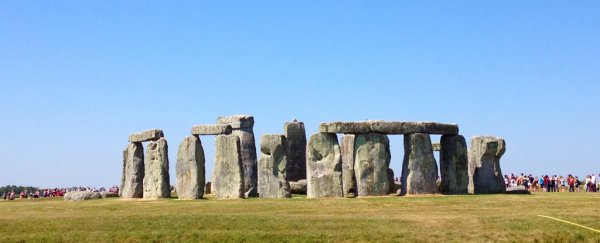A man has given back a meter-long stone core he took from Stonehenge more than 60 years ago.
Robert Phillips removed the sample during an archeological operation in 1958, where he was working to help reinforce a cracked stone, according to Historic England, the charity which preserves the site.
Philips kept it with him for the decades that followed, initially keeping it in a plastic tube at his office in Basingstoke, before taking it with him when he moved to the US, and eventually displaying it on the wall of his home in Florida.
He decided to return it on the eve of his 90th birthday, Historic England said. The return took place in 2018, but was only made public this week.
 The core. (English Heritage)
The core. (English Heritage)
Heather Sebire, English Heritage's curator for Stonehenge, said the charity was grateful Phillips decided to return the stone home.
Archaeologists believe that the missing piece could help trace where the giant stones originally came from.
Sebire said: "The last thing we ever expected was to get a call from someone in America telling us they had a piece of Stonehenge," she said in a statement. "Studying the Stonehenge core's 'DNA' could tell us more about where those enormous Sarsen stones originated."
 A core of Stonehenge's Sarsen stones went missing in 1958. (English Heritage)
A core of Stonehenge's Sarsen stones went missing in 1958. (English Heritage)
Stonehenge, one of the world's most famous prehistoric monuments, was built in several stages. The first part was built about 5000 years ago.
The site's bluestones – smaller pieces of rock scattered around the center – were brought to southern England from more than 100 miles away in Wales. But little is known about the larger stones – known as Sarsen stones – which form its recognisable outer structure.
 (Matt Carden/Getty Images)
(Matt Carden/Getty Images)
The "pristine" core Phillips gave back could give better information on the stones' chemical composition, providing new clues about its origin.
Professor David Nash of Brighton University, who is leading the research into the core, said: "Conventional wisdom suggests that they all came from the relatively nearby Marlborough Downs but initial results from our analysis suggest that in fact the sarsens may come from more than one location."
English Heritage is also looking for two other cores that were taken from the monument. Phillips' son Robin, who travelled to Stonehenge to return the sample his father took, said he hopes that the other missing pieces show up.
"It would be fascinating to know where the other two cores went, or indeed if there any other missing pieces out there that might be returned one day," he said.
This article was originally published by Business Insider.
More from Business Insider:
